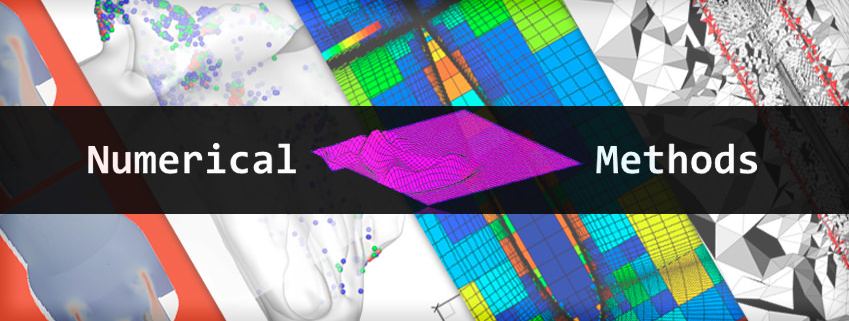
Numerical methods for computational mechanics to simulate complex problems capable to running efficiently on supercomputers are developed in Alya code. They are the mathematical ingredients required to reach a successful simulation.
Summary
The challenge to solve complex problems implies to develop the proper numerical methods, which guarantees the correct solution of our problem. Many issues have to be considered due to the different aspects involved in the resolution of computational mechanical problems: discretization, solvers, numerical instabilities and multiphysics problems.
The numerical methods developed in CASE and implemented in Alyta code are suitably adapted to different architectures in order to be able to run in moderns supercomputers.
Objectives
The main topics in numerical methods are:
- Stabilization techniques. Variational subgrid scale model are implemented for compressible and incompressible flows.
- Solvers and preconditioners. Local preconditioning is developed such that preconditioners are adapted to the physics of the problem and more efficient solvers are obtained.
- Domain Composition Methods. Domain composition methods (DCM) consist in obtaining a solution to a problem on a domain, from the formulations of the same problem expressed on various subdomains. The term DCM is generic and does not give any clue about how the fragmented solutions on the different subdomains are composed into a global one. In Alya code many methodologies are implemented. HERMESH method that consists in a mesh reconstruction to join impendent meshes and the other strategy is an Algebraic coupling.
- Lagrangian transport particles simulations. Particles are transported in a fluid as consequence, mainly, of the drag force, although many other forces may appear depending on the problem. Chosen the forces, Newton’s law is applied, causing acceleration to each particle. In order to compute this acceleration, an adequate integration scheme is studied to solve this kind of problem. In addition, in an HPC scenario, where big meshes are used and millions of particles can be computed at the same time, the calculation becomes a challenge and adequate subdomain decomposition for the fluid and for particles is analyized.
- Contact problems. Computational contact problems with particular interest in biomechanics are developed and the research is focused on issues in domain composition and decomposition problems, finite element techniques for non-linear mechanics, parallel scientific computing and computational contact mechanics.
- Immersed boundary. Implementation of a computational system to numerically simulate the interaction between a fluid and an arbitrary number of rigid bodies are also included in Alya code.
- Mechanics of deformation and fracture. This research line focus on the mechanics of deformation and fracture of advanced composite materials. Areas of particular interest are aerospace applications, biomedical simulations for soft tissues and computational micromechanics. The work is focused on the development of progressive damage models, cohesive element formulation for delamination under a mixed mode and low-velocity impact simulation of composites.
- Optimization problems. An adjoint-based framework to handle multi-physics optimization/uncertainty quantification problems adjusted to the supercomputers is developed.

